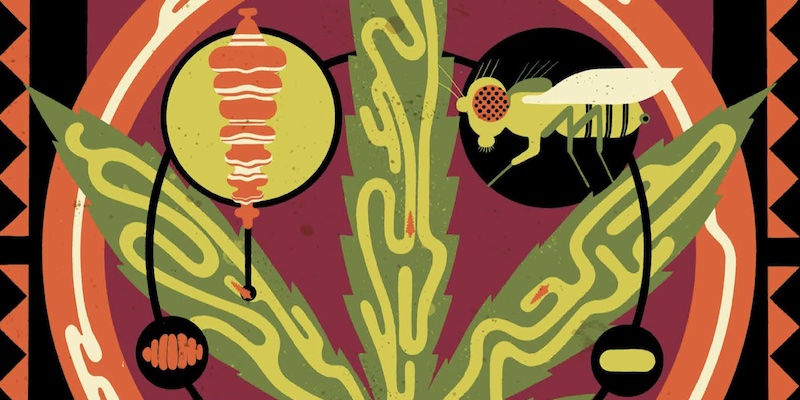
¡Hola, mundo!
Te damos la bienvenida a WordPress. Esta es tu primera entrada. Edítala o bórrala, ¡luego empieza a escribir!

If you’re growing marijuana, it is very likely that you’ll have to face a stealthy and harmful adversary at some point. That’s the leaf miner, a pest that can easily compromise the health and development of your cannabis plants. In this post, we explain everything you need to know about this threat so you can prevent it or, in case it’s already too late, eliminate it from your grow so it doesn’t cause further damage.
The first step in any battle is to know your enemy well, so early identification of leaf miners will be your best tool for a successful harvest. This pest can affect several plant species, including cannabis. Although there are many different types of leaf-mining insects, those that are more likely to settle on marijuana crops are Liriomyza trifolii, Liriomyza cannabis, and Liriomyza strigata. These belong to the Agromyzidae family, within the order of Diptera, which consists of more than 3,000 species in 40 genera.
This mainly comprises several species of flies, although some species of moths and beetles also produce leaf-mining larvae that find a rich food source in cannabis leaves. The larvae are tiny worms, rarely more than 3 mm long, and their colour ranges from white to pale green. Adult flies are blackish or yellowish, and resemble tiny house flies, with a length of about 2 mm.
The life cycle of leaf miners goes through different stages. In the initial phase, adult flies lay their eggs on the cannabis leaves. Some females can lay up to 350 eggs each. Once the eggs have hatched after two to six days, the larvae start feeding on the inner tissue of the leaf, creating highly characteristic and visible galleries. It is usually at this point that growers realise that something is happening to their plants.
When the larval state has been completed, the leaf miner transforms into a pupa, which usually happens whilst it’s still inside the cannabis leaves. Finally, in the last stage, it emerges as a winged adult to continue the cycle, reproducing and, in the case of females, laying more eggs on the leaves. The full life cycle lasts between 30 and 40 days, so you can expect between two and six generations per year when growing outdoors. However, if you’re growing indoors, a single generation can take just one month and reproduce throughout the whole year.
Temperature and humidity are two determining factors for the development of the leaf miner population. High humidity levels and a temperature above 25ºC are ideal conditions for its appearance. Females stop laying eggs below 15ºC.
This pest is hard to detect in its adult stage, or when the eggs inserted in the leaves have not yet hatched. As they are extremely tiny flies that move through the air, they normally go completely unnoticed (especially in outdoor grows). Let’s face it: controlling every single species of insect that may roam within the vicinity of your plants is virtually impossible.
But it is possible to identify the first signs of a leaf miner infestation – look for some tiny ‘bites’ that the females make on the leaves as they’re feeding on them, although these are still often hard to spot.
Most growers become aware of this pest when they find the marks that the larvae make as they move around the leaves. You’ll be able to recognise them immediately because they are incredibly characteristic: white paths with a certain silver tone, with a brown spot at one end (the larvae), or without it if the pupa has already emerged to the surface, leaving the leaf behind. You will also find that they can leave a trail of drool and excrement in their wake, with these open wounds on the leaves increasing the chances of other unpleasant substances infecting or killing the plant.

Although leaf miners are not one of the most lethal pests for cannabis plants, they can cause real havoc on your grow by affecting their development and yielding capacity. As mentioned already, the main damage that this pest can cause derives from the impact of the larvae feeding on the plant matter inside the leaves.
This can lead to leaf loss and a decrease in overall leaf quality, which not only causes stress to the plant but also makes it difficult for it to perform its biological processes correctly. Leaf miners can delay plant growth during the vegetative phase and reduce the yield during the flowering stage.
What’s more, the bites of the adult females can cause direct damage to the leaves and can also become entry points for various plant pathogens and viruses, thereby increasing the risk of diseases.
Prevention is always the best strategy to keep your cannabis grow pest-free and obtain a successful harvest. So, here are a series of measures that you can implement in your cannabis grow to help prevent the appearance of leaf miners:

Acting quickly is crucial to effectively eradicate leaf miners. If you detect an infection on a leaf, you can take the following steps to combat this annoying pest:
So, as you can see, the appearance of leaf miners in your marijuana grow can represent a real challenge, but with the right strategies you can protect your plants and ensure an abundant and aromatic crop of delicious cannabis buds. And there’s no doubt that your best allies against this plague will be constant vigilance, prevention, and rapid intervention. Happy growing, friends!